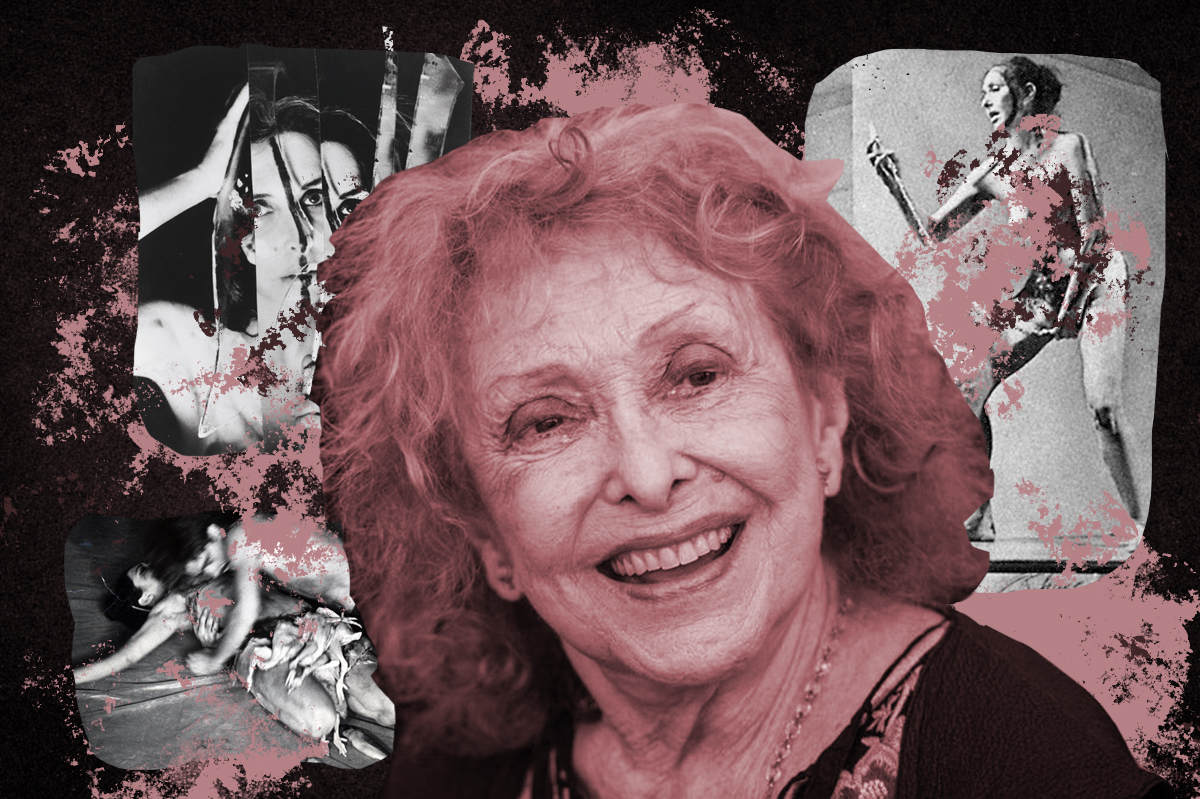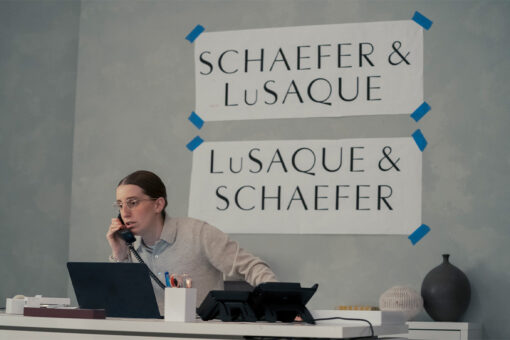The feminist, Jewish artist Carolee Schneemann has passed away at the age of 79. You may not have heard of her, and honestly, that’s a shame, though completely understandable if you didn’t take art history in college with a cool feminist professor. So let’s remedy that: Schneemann was a true pioneer and a badass feminist who deserves to be remembered for her powerful and brilliant work.
Nowadays, we may think of naked bodies as an emblematic, even cliched part of performance art, but it was Schneemann’s groundbreaking performances that started that tradition. By putting naked bodies, especially her own body, into her art, Schneemann’s work was a celebration of the corporeal. She felt that it was important for a woman to be in connection with her body. In an era when women and minorities are still struggling to take agency of their own narratives, her work, brave and genuine, celebrated the female body and its agency.
For that, and for the diaristic quality of her work, Schneemann drew the ire of both male critics and feminists. She was too self-indulgent, too pornographic, or not enough, depending on the critic.
Which is why her work, like the work of other avant-garde female artists like Louise Bourgeois and her peer Judith Bernstein, only really got the recognition it deserved later in her life, when, as she told the New York Times, her naked body was no longer threatening to men who “don’t want to sleep with us anymore.”
https://twitter.com/hetherrfortune/status/1103675973420175360
Schneemann was also a feminist pioneer in her own family, being the first woman to get a college degree. Her father, a general practitioner, did not believe that women should go to college and refused to pay for her education, but luckily she was able to get a scholarship to Bard College. She was then temporarily expelled from Bard for “moral turpitude,” possibly for creating naked drawings of herself (imagine, the hypocrisy: After all, painting naked models is an integral part of the art school experience).
Yet, that early experience may have posed a question that Schneemann asked throughout her career, according to Hyperallergic’s Queen Moreland: “Could a nude woman artist be both image and image-maker?” A lot of her work was also a reaction to the sexism she experienced as an art student and in the art world.
Though her entire body of work is worth exploring, “Interior Scroll,” (1975–77) is perhaps her most famous performance piece. It featured her reading from a scroll that she pulled out of her vagina. The text of “Interior Scroll” recounts “a conversation between herself and an unnamed ‘structuralist filmmaker’ who refused to watch her film” and was absolutely stunning:
In memoriam to the great #CaroleeSchneemann (photo and text excerpt from Interior Scroll, performed at the Telluride Film Festival, 1977) pic.twitter.com/mMe0uxjRiE
— Chloe Wyma (@chloewyma) March 7, 2019
In 2017, Schneemann sat down with one of our faves, Abbi Jacobson, for my favorite episode of her excellent art podcast, “A Piece of Work.” The two discussed another iconic Schneemann performance piece: “Meat Joy,” (1964) in which almost naked bodies writhe around in paint and raw meat (some have said the work inspired Lady Gaga’s famous meat dress). She told Jacobson about the context in which “Meat Joy” was made:
“It was so radicalizing, taboos about touch, about smell, a sense of pervasive erotic suppression, and there was no dynamic of young women depicting their own pleasure or enacting it.”
Another work in which Schneemann takes agency of her own pleasure, quite literally, is “Fuses” (1964–67), which shows her lovemaking with partner James Tenney from the perspective of their cat, Kitsch. The video was distorted with acid, fire, and paint.
Schneemann’s later work was more political in nature, addressing war and suffering (not that dealing with female agency isn’t inherently political, but still).
She addressed the Vietnam war in “Viet-Flakes” (1965), “a film that shoots newspaper clippings from above as if from the cockpit of a jet” and the war in Lebanon with 1980’s “Dust Paintings,” which incorporates photographs of war damage in the country “with ash, shards of glass, and the remains of computer equipment.”
When she won the Golden Lion for lifetime achievement in the Venice Bienalle of 2017, one of the most prestigious awards of the art world, her mind kept going back to the fcat that “the refugees washed up on the shores of Italy and Greece were given golden wraps. Struggling people all wrapped in this golden foil.”
Talking to Jacobson, Schneemann also addressed the recent political times, in the era of the Trump presidency, which she called “a dark tsunami.”
“This is more grotesque and deforming the things that we struggled to put in place for a more civil culture,” she said.
https://twitter.com/jeremy_millar_1/status/1103563247523897344
In that vain, I think there’s nothing we need more in these dark times than to celebrate Carolee Schneemann’s brilliant, groundbreaking art.



